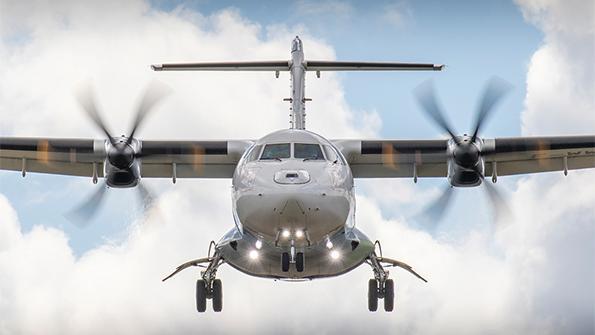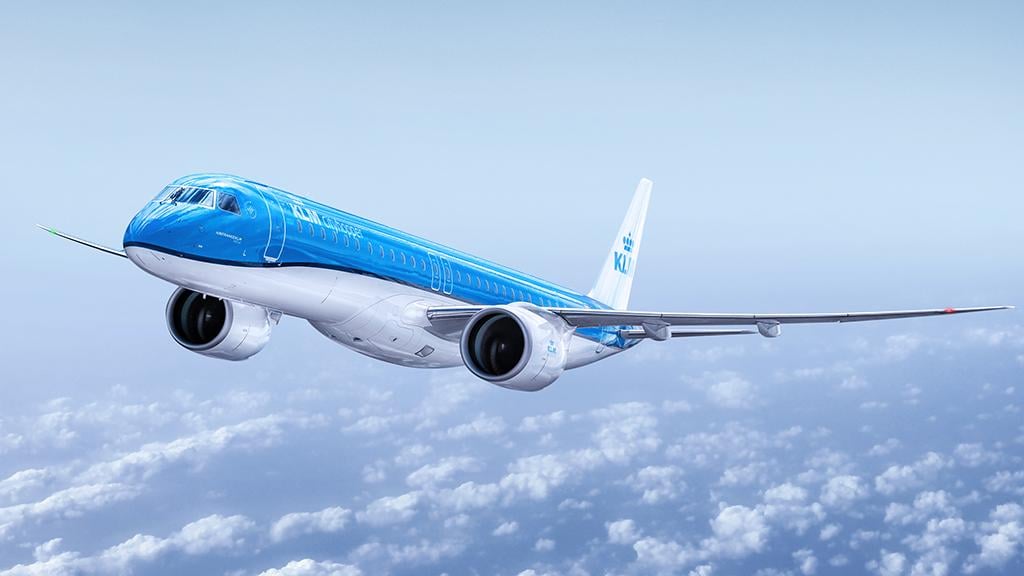Why Regional Aircraft-Makers Are Looking At What They Could Do Next

This is an abbreviated version of the article: Regional Aircraft-Makers Work On Future Concepts.
Remember the aviation boom times around the turn of the century, when it seemed almost anything would work in the fast-expanding economy? Those 50-seat regional jets, especially—airlines ordered almost 1,000 regional aircraft in the year 2000 alone. And in 2007, a few years after the introduction of larger regional jets such as the Embraer 170/190, the manufacturers collected orders for another 750.
Today, the industry could not look more different. The entire commercial aviation sector recorded only 53 orders in 2020, largely due to the effect of the coronavirus pandemic. Total orders stood only at 310 aircraft in 2019, but 110 of them were for Comac aircraft and placed by state-owned Chinese airlines.
Several manufacturers have exited the market entirely—most prominently Bombardier, which sold its CRJ series to Mitsubishi and its turboprops to Longview Aviation Capital. Mitsubishi shelved the SpaceJet, de Havilland is “pausing” production of the Q400, and with no firm orders in place, Embraer is delaying introduction of the 175-E2 by another year. The larger versions of Embraer’s E2 jets are still not selling well, despite a big recent order for the 195-E2. Versions of the ATR turboprop are still being built 37 years after first flight, albeit at very low rates after some solid years in which, some say, ATR oversold. In short, what used to be a promising growth market is back to niche status for now.
The next regional revolution may not be driven by larger aircraft, though. Instead, their smaller counterparts and the advent of electric and hybrid-electric technology will set the pace. A multitude of projects are emerging, some of which could become reality within the next five years, and some airlines, particularly in Europe, are showing real interest.
Unlike in the mainline aircraft market, where Airbus and Boeing are only facing the longer-term prospect of Comac breaking up their duopoly, few things appear to be set in stone for the regional market, which could look very different in a relatively short period. Is regional aviation headed for a post-pandemic renaissance?
THE BEGINNINGS
In the mid-1990s, aircraft manufacturers and airlines had invented a new segment, regional jets, led by the Canadair CRJ100 that entered service in 1992. What was once a niche for so-called commuter aircraft—uncomfortable, noisy and slow turboprops that were often flying in the clouds, not above them—suddenly became an attractive growth market. The new jets did not necessarily have the same range as traditional narrowbodies, and they surely had higher unit costs, but that did not matter so much because they were attractive for both airlines and passengers. Airlines transformed their hubs with a lot more feed than they could have generated before, and space constraints aside, passengers could still fly with jet comfort.
Beyond the obvious effect of the pandemic on airline finances, there are longer-term structural issues that have slowed sales. For starters, regional OEMs have become the victims of their own success. While a lot of early 50-seaters were retired years ago because of their high unit costs, they have already been replaced by larger aircraft. The current fleet is still relatively young, making the prospect of replacement economically unattractive. For example, the average age of the first-generation E-Jets is 10 years. Therefore, even Embraer, which enjoys a monopoly in the large regional jet space, is feeling the effects of the pandemic.
In terms of market demand, Embraer probably launched the E2 family too soon, says Rodrigo Silva e Souza, vice president of marketing for Embraer Commercial Aviation. “We were forced to do it because the competitive landscape changed,” he adds. Both mainline OEMs reengined their narrowbodies, and the C Series became a much stronger competitor after Airbus acquired the program and turned it into the A220.
Read the full article to find out why the E2 is technologically a big step forward for Embraer.
However, Richard Aboulafia, vice president of analysis at the Teal Group, points out that “the markets are limited and saturated quickly.” In addition to the many young larger jets, a lot of very old turboprops delivered even in the 1980s and 1990s are still in service. The industry consolidation toward fewer, larger, network airlines has led to less need for feed into smaller hubs using smaller aircraft. In the U.S., LCCs have entered what in the past were regional markets, and the LCC business model does not provision for regional feed.
In spite of the current slump, Aboulafia is not pessimistic. He argues that Embraer, for example, could have seen a lot more orders for the E-Jets with lower production costs and different pricing as a consequence. Also, “history says demand will go back up,” Aboulafia notes. “And the installed base says it almost certainly will. The question is when.”
Read more views from Remy Bonnery, senior project manager at Archery Strategy Consulting.
FUTURE PROJECTS
At Embraer, the current focus is on launching a new large turboprop offered in 70- and 90-seat versions that feature a range of around 1,000 nm. The aircraft will essentially use the E2 cabin with a new wing, empennage and new turboprop engines. Embraer plans to launch the aircraft next year.
There has recently been “a step change in the level of airline interest,” says Silva e Souza. “If we come to this market it is to be the leader.” When demand returns, “it will be for a new turboprop,” he adds, saying he even anticipates “strong demand” in the U.S. after the presidential election last fall, given that the Biden administration is focusing much more on sustainability issues.
Read more about Embraer's latest offering

ATR, meanwhile, is the incumbent leading turboprop manufacturer. In order to get back to 60-70 deliveries per year, customer financial health is essential in the short term, says CEO Stefano Bortoli. “If [regional airlines] don’t sell tickets, they cannot generate cash,” Bortoli says. “Given their size, their ability to have access to liquidity is not the same as big airlines. The latter are supported by governments.” As a result, he calls for a more supportive attitude toward regional carriers.
Bortoli, unsurprisingly, strikes a cautious tone about the plans of rival Embraer. “My first takeaway is that if somebody else is considering joining turbo-prop production, it confirms the importance of that segment in the aeronautical industry,” he says. To compete with a new Embraer, ATR would bet on its ongoing strategy of incremental improvement, he adds. Could ATR partner with Embraer? “It is not part of my thinking process,” Bortoli says.
However, compared with ATR’s precrisis estimate, it will take up to 18 months longer for customers to be ready to take delivery of the ATR 42-600S. “We have 20 commitments, including firm orders, all with deposits, and they have all been confirmed,” says Stephane Viala, ATR senior vice president of engineering. “But we want to be timely in serving the market.”
ATR plans to use its incremental approach as a bridge toward a zero-emission aircraft. A first study was of a full-electric aircraft based on batteries. The conclusion was negative. “We would only carry batteries,” Viala says. “Yet we made the calculation with current and extrapolated-performance batteries.”
The target for a hybrid architecture “would be 30% less CO2 over a full life-cycle analysis,” Viala adds. “This means we are taking into account the CO2 emitted for battery production. And batteries need to be replaced every 2,000 flight hours.”
Under an agreement with Air New Zealand, the operational effect of using batteries was investigated. “Swapping high-voltage batteries on the ground is not ideal, and spending hours charging is not desirable either,” Viala notes.
Discover more about why Viala states that hydrogen propulsion holds the greatest potential.
As a shorter-term solution, ATR is working on increasing the certified proportion of sustainable aviation fuel to 100%, up from 50%. “There is no showstopper,” Viala notes. “The difference lies in the aromatics content, which means some seals could have an aging problem. The industry has to first agree on a specification.”
That technical work will take 3-4 years, and it will be a collaborative effort by the system integrator and the engine-maker, Bortoli says.
Read the full article, Regional Aircraft-Makers Work On Future Concepts by Jens Flottau and Thierry Dubois for AWST.